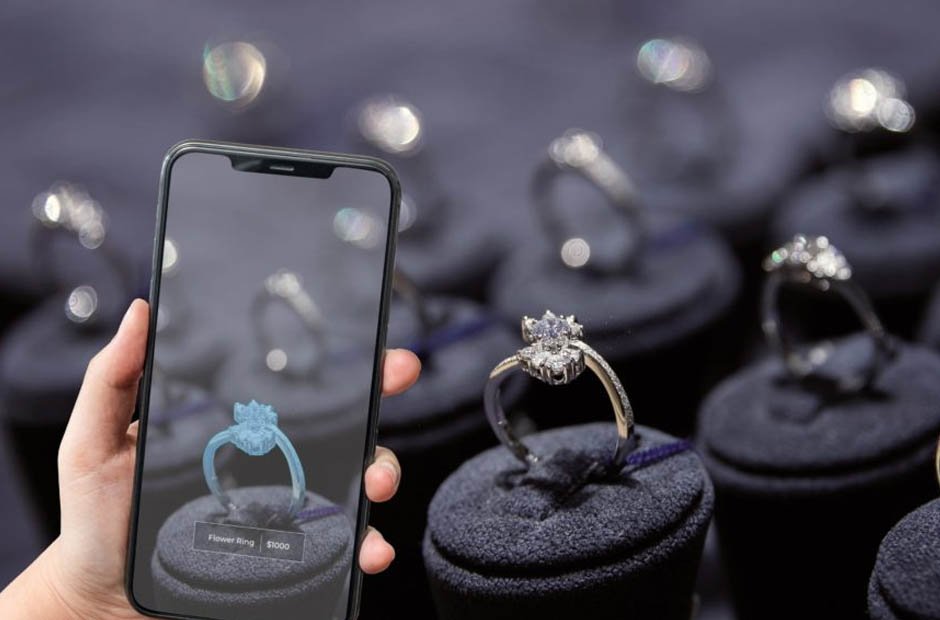In recent years, augmented reality (AR) has transformed various sectors by enhancing how consumers interact with products. The jewelry industry stands at the forefront of this technological revolution, embracing AR to offer personalized shopping experiences. This technology allows shoppers to visualize pieces on themselves before making a purchase. Such advancement helps improve customer satisfaction and reduce returns.
Enhancing Customer Experience with Try-On AR
One of the greatest advancements in AR technology within the jewelry sector is the development of virtual try on jewelry solutions. These platforms enable customers to see how different jewelry items would look on them through a simple interface on their smartphones or computers. This method adds convenience and empowers customers to make more informed decisions. They can experiment with various colors, styles, and sizes in order to find the perfect match for their preferences and needs without the pressure of a physical sales environment.
Customization at Its Peak
Custom jewelry design has always been about uniqueness and personal expression. AR technology elevates this by providing detailed previews of customized pieces. Customers can modify aspects such as gemstone size, setting type, and metal color. They can immediately preview and see how these changes will look. This instantaneous feedback loop makes the design process more interactive and fulfilling.
Streamlining the Design and Manufacturing Process
AR technology also streamlines the design and manufacturing processes in jewelry making. Designers can create and modify designs in real-time, reducing the need for physical prototypes. This not only speeds up the production cycle but also cuts down on material waste of product samples for brands, making the process more environmentally friendly. Moreover, AR can help designers and manufacturers spot potential issues before the piece goes into production. This ensures higher quality and customer satisfaction.
Bridging Gap Between Online and Offline
The rise of the e-commerce industry has led to increased competition among jewelry retailers. AR helps bridge the gap between online as well as offline shopping by providing a tactile experience digitally. With virtual try on jewelry, customers can gain a realistic preview of how jewelry pieces will look and feel. This reduces the uncertainty that often accompanies online purchases. This technology helps in building trust and confidence among consumers who might be hesitant to buy expensive items without seeing them in person.
A Seamless Collaboration
Furthermore, this technology opens up new avenues for collaboration between designers and clients. Through virtual consultations, individuals can communicate their vision, receive personalized recommendations, and actively participate in the design process from start to finish. This approach of collaboration strengthens the relationship between the designer and client and ensures that the final product exceeds expectations.
Future Trends and Innovations
Of course, like any technological advancement, this technology is not without its challenges. Issues such as the accuracy of virtual representations, compatibility across different devices, and the need for continuous innovation and refinement remain areas of ongoing development. However, these challenges are likely to be addressed, paving the way for even more exciting possibilities in the future.
As technology continues to evolve, the future of AR in jewelry design looks promising. Future advancements may include more realistic renderings and integration with other technologies like AI and machine learning to predict consumer preferences and suggest personalized designs. Another potential development could be the incorporation of tactile feedback, where users could ‘feel’ the jewelry through haptic technology.
Augmented reality is reshaping the landscape of the jewelry industry by enhancing how products are designed, tried, and purchased. It brings a new level of customization and convenience, making it a pivotal tool. With time, it will undoubtedly unlock new creative possibilities and redefine consumer experiences in the jewelry market. The integration of AR in jewelry design meets the growing demand for personalized shopping experiences. Additionally, it sets a new standard for the luxury goods industry.








